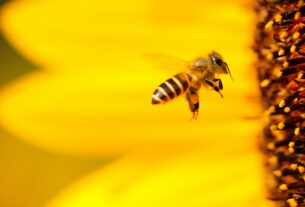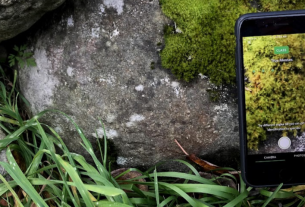Mégane Déziel, Université du Québec à Montréal, discusses her article: Resolving the Effects of Functional Traits on Tree Growth Rates: The Influence of Temporal Dynamics and Divergent Strategies by Leaf Habit
Functional ecology has long assumed that variation in tree growth reflects differences in functional traits, which serve as proxies for resource acquisition and investment strategies. Yet empirical evidence has been mixed: some studies found strong relationships between traits and tree growth, while others found almost none. Does this mean functional traits are poor predictors of tree growth?
Not quite. Our research suggests the missing piece is that relationships between traits and growth are not static. They shift over time and differ between two groups defined by leaf habit: deciduous and evergreen species.
Tracking growth from germination to canopy closure
We analyzed data from seven common garden experiments of the International Diversity Experiment Network with Trees (IDENT), spanning North America and Europe. These experiments were initially designed to test how biodiversity influences productivity, but here we focused exclusively on monocultures. By doing so, we eliminated the confounding effects of species interactions and environmental filtering, which had mostly not been accounted for in previous studies, in order to capture a baseline relationship between traits and growth.
Over nine years, from germination to canopy closure, we tracked height growth and then tested relationships with four widely studied traits related to resource acquisition and investment:
- Specific leaf area (SLA; leaf area per dry mass)
- Wood density (WD; dry mass per wood volume)
- Leaf dry matter content (LDMC; leaf dry mass relative to leaf fresh mass)
- Seed mass (SM; average weight of a seed)
The aim was to establish, amid previous inconsistencies, whether functional traits can be useful predictors of tree height growth, if their influence changes as trees age, and if they differ between deciduous and evergreen species.

Trait-growth relationships are dynamic
We compared alternative Bayesian hierarchical models and found that predictive performance increased substantially when trait effects were allowed to vary over time and between deciduous and evergreen species. Overall, our best model explained 55% of growth variation. For deciduous species, traits had the strongest influence in the first three years, when high SLA and low SM were especially influential in promoting rapid height gain. In contrast, evergreen species showed weaker and more variable trait effects in early stages, and the strongest effects emerged by the seventh growing season. For both leaf habits, trait effects weakened and nearly disappeared between the fourth and sixth growing seasons.

Fast starters, steady builders
These dynamic relationships mirror the broader growth strategies of the two groups. Deciduous trees acted as fast starters, showing rapid early growth through high photosynthetic capacity and cheap tissues. Evergreen species, by contrast, grew more slowly at first, reflecting conservative investment and potentially greater belowground allocation, but their long-lived foliage gradually accumulated, boosting growth in later years. By the seventh growing season, growth rates between the two groups began to converge, reducing the initial deciduous advantage. This convergence reflects both ontogenetic changes in canopy structure and the shared tendency of all trees to slow their height growth as they age.

Towards better predictions of tree demography
Our findings highlight that traits are powerful predictors of tree growth, especially when combined with two simple variables: age and leaf habit. Viewing trait effects as dynamic rather than fixed clarifies why studies confined to single time periods often reported weak or contradictory patterns. In such cases, positive and negative effects across different life stages may have canceled each other out, masking the overall role of traits. This reframing moves us closer to the long-sought goal of predicting demographic rates from functional traits, paving the way for more robust trait-based models of forest dynamics under global change.


